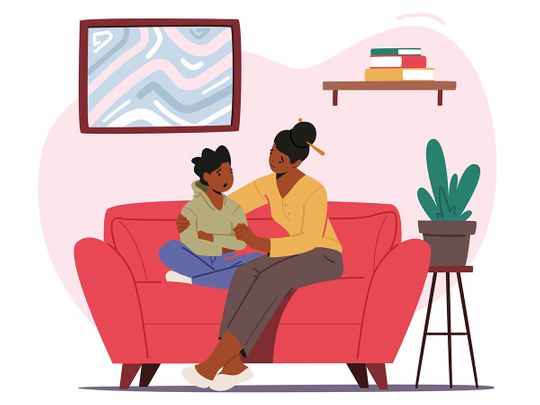
How do you get a kid to stop making up stories instead of telling the truth? Is spinning a tale the same as uttering a lie? One could argue intent; the former is meant to entertain and engage while the latter is an attempt to dupe. But as a toddler, can one really know the difference?
The telling of fibs usually begins at age three, says Carla Chedid, UAE-based Open Minds Centre. As a child grows, he or she may realise the benefits of refocusing an adult’s attention to get out of trouble, or explains Chedid, to fit some social standards or to look cool. This increases incidents of lying.
“Usually children start to lie at the age of three and they increase the exhibition of lying behaviours between four and six years old. The older they get, the more they master lying by matching their words to their facial expression, so adults find it difficult to differentiate between their truths or lies.”

Usually children start to lie at the age of three and they increase the exhibition of lying behaviours between four and six years old.
If it takes him or her time to answer.
If they change the topic when asked a direct question a few times.
If they use a higher vocal pitch than usual to answer.
If they avoid eye contact.
If they stutter.
The plus points
That’s not to say all stories are evil. US-based WebMD says lying is indicative of a number of positive developmental milestones, including:
Cognitive ability. It takes cognitive skills to regulate actions, plan lies and strategise. Lying is a problematic behaviour, but it could be your child’s way of developing their thoughts and actions.
Controlling thoughts. Your child will need to go against what they’re trained to think to maintain a lie. This shows that some children can hold conflicting thoughts in their minds and control which action they talk about.
The negatives
What could go wrong if you don’t explain the value of the truth? Quite a lot. Nardeen Turjman, Clinical Psychologist at UAE-based German Neuroscience Center, explains: “Children need to be taught why telling the truth is essential, as being dishonest can lead negatively impacting relationships in terms of trust, which may then lead to a low self-esteem.”

Children need to be taught why telling the truth is essential, as being dishonest can lead negatively impacting relationships in terms of trust, which may then lead to a low self-esteem.
So how do you explain what’s okay and what’s not? Ross Addison, Managing Director and Consultant Child and Adolescent Cognitive Behavioural Therapist at UAE-based Reverse Psychology, explains that this really depends on a family. “I think this really comes down to each individual family on what they consider to be a story or a lie. Some families are very fixed that anything other than the truth is fictitious. Of course, depending on the age of the child you may not want to use the word lie, and as parents we tend to say to under eight year olds that they're 'telling stories' instead of lies, but the principle in essence remains the same, it's an untruth,” he says.
Do this, not that
Use examples: Addison explains: “Speaking with children about what the truth means, giving them tangible examples of a lie or telling the truth can really help. I often find that sharing examples helps children understand complex notions.”
Be gentle: “Instead of using the word lie, which has a very negative connotation, instead telling your children that they're not telling the truth is a softer approach but sends the same message,” he says.
Books may hold the key: “Reading books together is also a good way of explaining the difference. Most children's books discuss this notion and you can pause the reading when this theme arises and discuss it together,” he adds.

Instead of using the word lie, which has a very negative connotation, instead telling your children that they're not telling the truth is a softer approach but sends the same message
Talk about value systems: “Having a list of house values can also be a lovely way of reinforcing the values that you want to instil in your children. This can be taped to the fridge and all family members can adhere to it. It may note, 'be kind to people', 'always tell the truth', 'treat everyone as an equal' - whatever your own values as parents may be,” he says.
Reinforce positive behaviour: “Being given the safe space and opportunity to be honest will boost the child’s self-esteem, while increasing honesty as a value. When a child tells the truth, provide positive feedback to reinforce the behaviour,” says Turjman.
Learning to craft stories is important for neural connections and sparking creativity, but it’s important to know where an explanation tumbles into the dark space of lies.
Have a topic you'd like us to cover? Write to us at parenting@gulfnews.com




